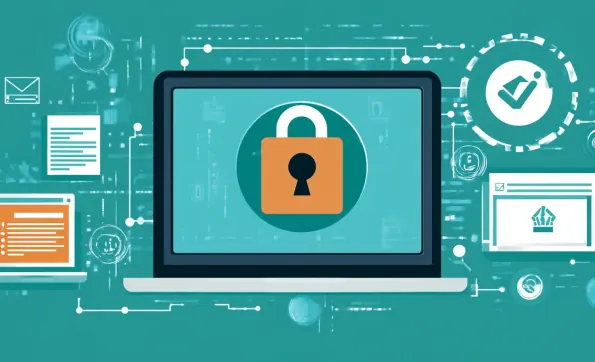In today’s digital age, the landscape of cyber threats is constantly evolving, presenting significant challenges for organizations striving to protect their data and assets. The increasing sophistication of cyber attacks and the rapid emergence of new vulnerabilities necessitate a proactive approach to cybersecurity. This article explores key strategies that companies can implement to stay ahead of these threats and safeguard their operations. Cyber threats are not static; they continuously evolve: New tactics exploit emerging vulnerabilities and adapt to fresh security measures. This dynamic nature mandates continuous monitoring and a proactive approach from security teams to mitigate potential damage effectively.
Organizations must remain vigilant about the latest threat trends to better prepare their defenses. High-profile breaches, such as those centering around the zero-day vulnerability in Rackspace’s ScienceLogic SL1 platform or the exploits in Ivanti’s Connect Secure VPN, underline the importance of this vigilance. The new Verizon Data Breach Investigations Report (DBIR) notes a staggering 180 percent increase in vulnerability exploits over the past year. This surge vividly illustrates the heightened risk environment that today’s enterprises must navigate.
Understanding the Escalation of Cyber Threats
The frequency and complexity of cyber threats have surged in recent years, with attackers employing more advanced techniques to breach security defenses. These increased threats highlight the necessity for businesses to stay informed and ready. A critical factor in handling these evolving threats involves continuous monitoring and a rapid response strategy. This approach mitigates the potential damage that can arise from new and sophisticated cyber threats.
Organizations must keep abreast of the ever-changing tactics employed by attackers. By understanding how these techniques develop and identifying emerging trends, businesses can enhance their defenses. Recognizing the evolving nature of cyber threats, it becomes vital for companies to devote resources to staying updated on the latest threat intelligence. This means not only understanding potential vulnerabilities but also implementing robust monitoring systems to detect and respond to threats quickly.
Prioritizing Vulnerabilities for Effective Risk Management
Given the overwhelming volume of vulnerabilities that organizations face, it is impractical to address every single one. For instance, Fortune 500 companies contend with approximately 19,500 Common Vulnerabilities and Exposures (CVEs) and 4 million CVE instances. Effectively managing these vulnerabilities requires prioritization based on potential impact. By evaluating the severity and exploitability of each vulnerability, companies can allocate their resources more efficiently.
Focusing on the most critical vulnerabilities allows IT teams to address the issues posing the greatest risk to the organization. This strategy not only enhances the overall security posture but also ensures that resources are directed towards meaningful progress in protecting assets. Prioritization isn’t merely about identifying critical vulnerabilities; it’s about effective resource allocation and strategic remediation. By methodically evaluating the potential impact of each vulnerability, companies can focus their efforts where they are most needed.
Centralizing Visibility of Vulnerabilities and Exposures
Effective cybersecurity management hinges on having centralized visibility of vulnerabilities and exposures. Without aggregated data, security teams cannot protect against unidentified threats. Unfortunately, many organizations suffer from limited visibility due to siloed infrastructure encompassing IT, cloud, IoT, and OT environments. Centralizing visibility involves integrating data from various sources into a unified platform, providing a comprehensive view of the organization’s security posture.
This centralized approach allows security teams to act more swiftly and cohesively, directing their resources to areas that will effectively reduce risk. By breaking down silos and fostering collaboration across different departments, companies can enhance their ability to detect and respond to threats. The importance of a centralized view cannot be overstated. A fragmented security infrastructure can lead to missed threats and slower response times. By centralizing visibility, companies can streamline their threat detection processes and ensure a more coherent and coordinated defense strategy.
Leveraging Artificial Intelligence for Enhanced Cybersecurity
Artificial Intelligence (AI) has emerged as a transformative tool in the realm of cybersecurity. AI technologies provide comprehensive visibility into the attack surface, allowing for faster and more accurate identification of vulnerabilities. As cyber attackers increasingly leverage AI for their malicious activities, it is imperative that organizations equip their security teams with AI-powered tools. Beyond identification, AI assists in prioritizing vulnerabilities by assessing which ones pose the greatest threat.
This capability is crucial in a landscape marked by growing cyber threats and a widening cybersecurity talent gap. By automating routine tasks and providing actionable insights, AI enables security teams to focus on strategic initiatives and mitigate risks more efficiently. The application of AI extends to various facets of cybersecurity, from threat detection and response to predictive analytics. By harnessing AI, companies can stay ahead of attackers who also leverage advanced technologies.
Adopting a Proactive Cybersecurity Approach
In the face of evolving cyber threats, a reactive approach is no longer sufficient. Organizations must adopt proactive strategies to anticipate and mitigate risks before they lead to significant damage. This involves continuous monitoring, threat intelligence, and regular security assessments to identify and address vulnerabilities promptly. A proactive stance on cybersecurity also requires cultivating a security-first culture within the organization.
Employees should be educated about the latest threats and trained on best practices for safeguarding sensitive information. By promoting security awareness and encouraging employees to take responsibility for their digital actions, companies can reduce the likelihood of human error and enhance overall resilience. Proactive cybersecurity is not a one-time effort but an ongoing commitment. Regular security assessments and the integration of threat intelligence ensure that the organization remains vigilant and ready to tackle new challenges as they arise.
Building a Resilient Cybersecurity Framework
A resilient cybersecurity framework is essential for withstanding the onslaught of evolving cyber threats. This involves implementing robust security measures, such as multi-factor authentication, encryption, and network segmentation, to protect critical assets. Regularly updating and patching software, conducting penetration testing, and maintaining an incident response plan are also crucial components of a resilient framework.
Collaboration with external partners, such as cybersecurity vendors and industry peers, can further strengthen an organization’s defenses. Sharing threat intelligence and best practices helps to stay informed about emerging threats and enhances collective security efforts. By building a resilient cybersecurity framework, companies can better withstand cyber attacks and minimize the impact of potential breaches. Establishing a resilient framework is an ongoing process that evolves with the changing threat landscape. It’s about creating an adaptable system that can respond to new threats as they emerge.
Conclusion
In today’s digital era, the constantly shifting landscape of cyber threats presents major challenges for organizations working to protect their data and assets. The increasing complexity of cyber attacks and the quick emergence of new vulnerabilities require a proactive cybersecurity approach. This article examines essential strategies that companies can adopt to stay ahead of these threats and protect their operations. Cyber threats are ever-changing: New tactics exploit novel vulnerabilities and adapt to new security measures. This dynamic nature demands continuous monitoring and proactive measures from security teams to effectively minimize potential damage.
Organizations need to stay alert to the latest threat trends to better fortify their defenses. High-profile breaches, such as those involving the zero-day vulnerability in Rackspace’s ScienceLogic SL1 platform and exploits in Ivanti’s Connect Secure VPN, underscore the need for vigilance. The latest Verizon Data Breach Investigations Report (DBIR) reports a remarkable 180 percent increase in vulnerability exploits over the past year. This surge highlights the elevated risk environment that modern enterprises must contend with today.













